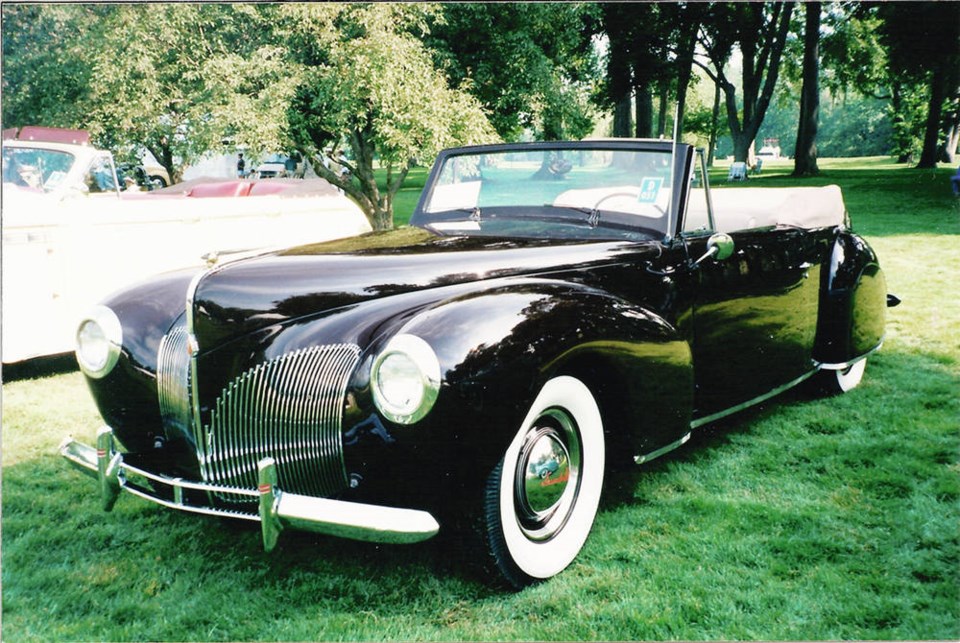The original Lincoln Continental, now referred to as the Continental Mark I, is a classic automobile design. It was recognized for its outstanding styling qualities by no less than the New York Museum of Modern Art which placed one on display. Ironically it was never intended as a production car.
In the late 1930s Edsel Ford, Henry Ford’s only son and president of Ford Motor Co. since 1919, wanted a unique cosmopolitan looking car to drive, especially on his winter vacations to Florida.
Unlike Henry, Edsel was a worldly sophisticated man with an aesthetic eye. He had travelled extensively in Europe and become familiar with the long-hood, short-deck “Continental” look of European cars. He asked Ford stylist Bob Gregory to create something similar for him.
As a base Gregory chose the Lincoln Zephyr, a “junior” Lincoln introduced in 1936. It was a good tasteful design with a futuristic teardrop silhouette and headlamps integrated into the fenders.
In addition to being stylishly aerodynamic, the technically interesting Zephyr had a modified version of unit construction and was the first Ford-produced car with an all-steel top. An optional Columbia two-speed rear axle was available for quieter more economical highway cruising.
The Zephyr was powered by a side-valve 75-degree 110 horsepower 267 cu in. (4.4 litre) V-12 that Ford engineers developed from the Ford V-8. Smaller than the V-12 of its large K-series siblings, it was increased to 292 cu in. (4.8 litre) and 120 horsepower for the Continental, but was never considered a truly successful engine.
Gregory started the design in the most basic way by simply laying drawing paper on top of the Zephyr design and tracing it out. He then added the styling features that provided its distinctive profile.
For the “Continental” look he bobbed off the Zephyr’s teardrop rear end, extended the rear fenders, added a separate trunk and mounted the spare and trunk vertically between the stretched fenders.
The car was also lowered three inches (76 mm) and the hood stretched seven inches (178 mm). The lovely Zephyr grille’s narrow delicately flowing vertical bars were retained. Because of its styling influence they called it the Lincoln Continental.
The design was so successful that when Edsel took it to Florida on vacation it was a sensation on the country club circuit. It was so popular that he is said to have brought home 200 Continental orders. That pushed Ford into producing a car that had begun as nothing more than a styling exercise on Edsel’s personal car.
Continentals were produced as both hardtop coupe and convertible, or “cabriolet” as it was called for that true Continental flavour. Production was just 350 cabriolets and 54 coupes in the first model year 1940. For 1941, now with pushbuttons replacing the external door handles, 850 coupes and 400 cabriolets were built.
The Continental was restyled for 1942 and lost some of the original’s charm. The vertical bar grille was replaced by a heavier two-piece design with horizontal bars. The rear fender line was raised and more chrome was added.
A larger 5.0 litre (305 cu in.) 130-horsepower V-12 replaced the original 4.8 litre (292 cu in.) 120-horsepower V-12. Only 200 coupes and 136 cabriolets were produced before the Second World War stopped American car production in February, 1942.
After the war, production of the Continental resumed as a reworked version of the pre-war model. Unfortunately, a new egg-crate grille was even heavier and more baroque, and chrome trim was laid on with a generous hand.
The original 4.8 litre (292 cu in.) V-12 returned, now with five more horsepower, for 125. In the 1946-1948 period 1,943 coupes and 1,391 cabriolets were built before production of the Continental Mark I ceased.
Despite calls for a new Continental, the Ford Motor Co. had more pressing matters such as bringing out its new post-war Ford model and rescuing the company from the ruinous condition old Henry had brought it to when he resumed power after Edsel’s death in 1943. He was soon forced out by his and Edsel’s wives and died in 1947.
It was not until the mid-1950s that Ford mustered the resources to produce an all-new Continental (not a Lincoln, the name now stood alone). The Continental Mark II appeared in 1956.
The Mark I Lincoln Continental, particularly the 1940 and 1941 model, is almost legendary for its outstanding styling. Its mechanical components were not particularly special, although the first and second gear ratios were quite high and a favourite hot rodding modification was fitting Ford transmissions with “Zephyr gears” to provide higher speeds in the intermediate ratios.
The Lincoln Continental Mark I, especially the early years, is a classic whose ageless beauty assures it a permanent place in automotive history’s hall of fame.



